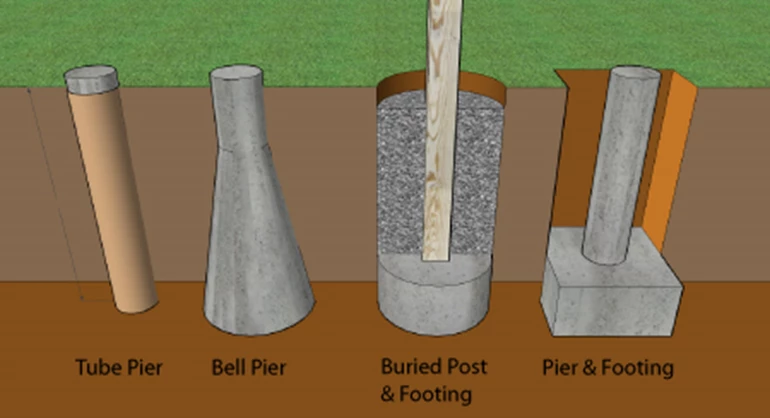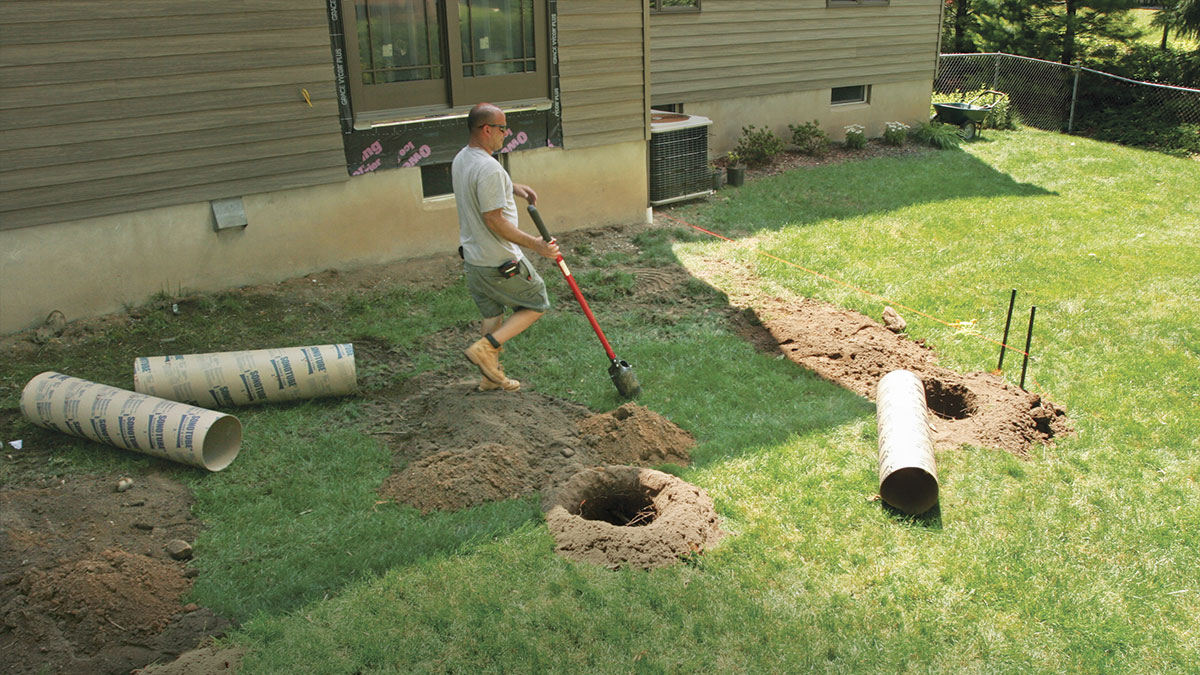Solid Ground, Solid Framework: The Basics of Deck Footings Installment
Solid Ground, Solid Framework: The Basics of Deck Footings Installment
Blog Article
Enhance Your Deck's Security With Proper Deck Ground: Make Sure Resilient Resilience and Safety And Security
When it concerns constructing a deck, guaranteeing its security and durability is of utmost value. One key factor that often obtains overlooked is the correct installation of deck grounds. These grounds serve as the structure of your deck, supplying the necessary support and stability to endure the examination of time. By understanding the effect of soil conditions and choosing the right materials, you can improve your deck's stability and ensure its long-lasting resilience and security. Exactly how precisely do you go around accomplishing this? In this discussion, we will check out the value of correct deck footing, overview you with the detailed procedure of installment, and highlight the relevance of normal upkeep to maintain your deck's stability.
Why Correct Deck Ground Issues
Appropriate deck ground is crucial for ensuring the security and long-lasting longevity of any type of deck structure. The deck ground, or foundation, acts as the anchor factor for the whole deck, sustaining the weight of the structure and moving it to the ground below - Deck Footings. Without a strong ground, a deck can come to be unsteady, bring about architectural failing and possible safety and security hazards

In addition, correct deck ground helps to protect versus moisture damage. Wetness can seep right into the ground and damage the structure, bring about deteriorating or decay. By making use of suitable materials and strategies for the footing, such as concrete piers or helical piles, the deck can be raised in the air, minimizing contact with wetness and prolonging its life-span.
Recognizing the Impact of Dirt Problems
The stability and sturdiness of a deck structure can be substantially influenced by the dirt problems in which it is built. Comprehending the impact of dirt problems is important for making certain the lasting sturdiness and security of a deck. Different sorts of soil have varying load-bearing abilities, drain capacities, and development and tightening buildings, which can all influence the stability of the deck.
One vital factor to take into consideration is the soil's bearing capacity, which refers to its ability to support the weight of the deck and any additional loads. Soils with high bearing capacities, such as compressed crushed rock or clay, are excellent for supporting heavy structures like decks. On the other hand, soils with low bearing capabilities, such as loose sand or soft clay, may need added measures to boost stability, such as deep footings or dirt stabilization methods.

In addition, the soil's propensity to acquire and broaden with modifications in wetness web content can influence the stability of the deck. Dirts with high clay web content are vulnerable to considerable development and tightening, which can cause working out and moving of the deck structure. Correct actions, such as setting up dampness barriers or using alternative foundation systems, may be needed to minimize the effects of soil motion.
Choosing the Right Ground Materials
What factors should be considered when picking the appropriate footing materials for a deck? Selecting the right ground products is essential for making certain the stability and longevity of a deck. A number of factors need to be thought about when making this choice.
To start with, the type of soil in the location plays an important function in determining the appropriate ground find materials. Different dirts have differing load-bearing abilities, so it is necessary to pick products that can adequately sustain the weight of the deck and any kind of potential loads it might birth.
Secondly, the climate and weather of the area must be considered. In locations with extreme winters or high levels of dampness, footing materials that are immune to rust and degeneration, such as concrete or treated timber, are suggested. These materials are a lot more durable and much less vulnerable to damage from freezing temperatures, moisture, and insects.
Moreover, the size and elevation of the deck additionally affect the option of footing products. Larger and taller decks require more considerable footings to guarantee stability a fantastic read and prevent moving or sinking. In such cases, materials like concrete footings or helical piers may be preferable.
Lastly, spending plan factors to consider need to not be ignored. While some materials might supply premium resilience and performance, they may also include a greater price. It is very important to strike a balance between cost and high quality when choosing the appropriate footing materials for a deck.
Step-by-Step Overview to Installing Deck Footings
When installing deck grounds, it is essential to follow a step-by-step overview to ensure security and toughness. By following these steps, you can make sure that your deck will certainly be able to stand up to the examination of time and give a secure and delightful outdoor room for many years to find.
The primary step in mounting deck grounds is to determine the location and design of your deck. This includes measuring and marking the location where the footings will certainly be placed. It is vital to guarantee that the footings are uniformly spaced and lined up with the deck's layout.
Next, you will need to dig the holes for the grounds. The deepness and size of the holes will depend on the dimension and weight of your deck. It is vital to dig the holes deep enough to get to listed below the frost line to stop frost heave.
Once the openings are dug, you can start pouring the concrete footings. It is recommended to utilize a pre-mixed concrete mix for this step. Fill the holes with concrete, ensuring that it is level and smooth. Use a message level to make sure that the grounds are plumb.
After the grounds have been put, enable the concrete to treat for a minimum of 48 hours prior to waging the deck setup. This will guarantee that the grounds have solidified and prepare to sustain the weight of the deck.
Normal Maintenance to Preserve Deck Security
To maintain the stability of your deck, regular maintenance is necessary. By applying a regular maintenance routine, you can ensure that your deck remains secure, resilient, and aesthetically attractive. One critical facet of upkeep is inspecting the deck for any indicators of damage or wear. This includes checking for broken or loose boards, rusted screws or nails, and any type of indicators of rot or degeneration. It is essential to deal with these concerns immediately to prevent further damage and possible security risks.
Cleaning your deck routinely is an additional vital maintenance task. Over time, mold and mildew, particles, and dirt can collect externally of the deck, bring about a unsightly and slippery look. Using a rigid brush and a light detergent or power washer, you can effectively eliminate these impurities and bring back the deck's initial appeal. In addition, on a regular basis using a safety sealer can aid protect against moisture damages and lengthen the life of your deck.
In enhancement to these regular upkeep jobs, it is likewise a good idea to perform an extensive inspection of the deck's architectural parts at the very least yearly. This includes inspecting the problem of the footings, joists, messages, and beams. Any type of indicators of degeneration or weak point must be attended to quickly to make sure the continued stability and safety and security of the deck.
Verdict
In verdict, proper deck ground is essential for making certain the long-lasting toughness and safety and security Extra resources of your deck. Comprehending the impact of soil conditions and picking the appropriate ground materials are essential action in this process. By complying with a detailed guide to installing deck grounds and routinely maintaining them, you can enhance your deck's stability. Ultimately, these steps will help protect your deck's stability and make sure a enjoyable and risk-free outdoor room for many years to find.
In this discussion, we will explore the importance of correct deck footing, overview you through the detailed process of installment, and highlight the relevance of regular maintenance to protect your deck's security.
Correct deck footing is essential for ensuring the security and lasting longevity of any type of deck structure.One of the primary reasons why appropriate deck footing issues is to protect against the deck from shifting or sinking over time (Deck Footings).In verdict, appropriate deck ground is important for making sure the durable longevity and safety of your deck. By complying with a detailed guide to setting up deck grounds and frequently maintaining them, you can enhance your deck's stability
Report this page